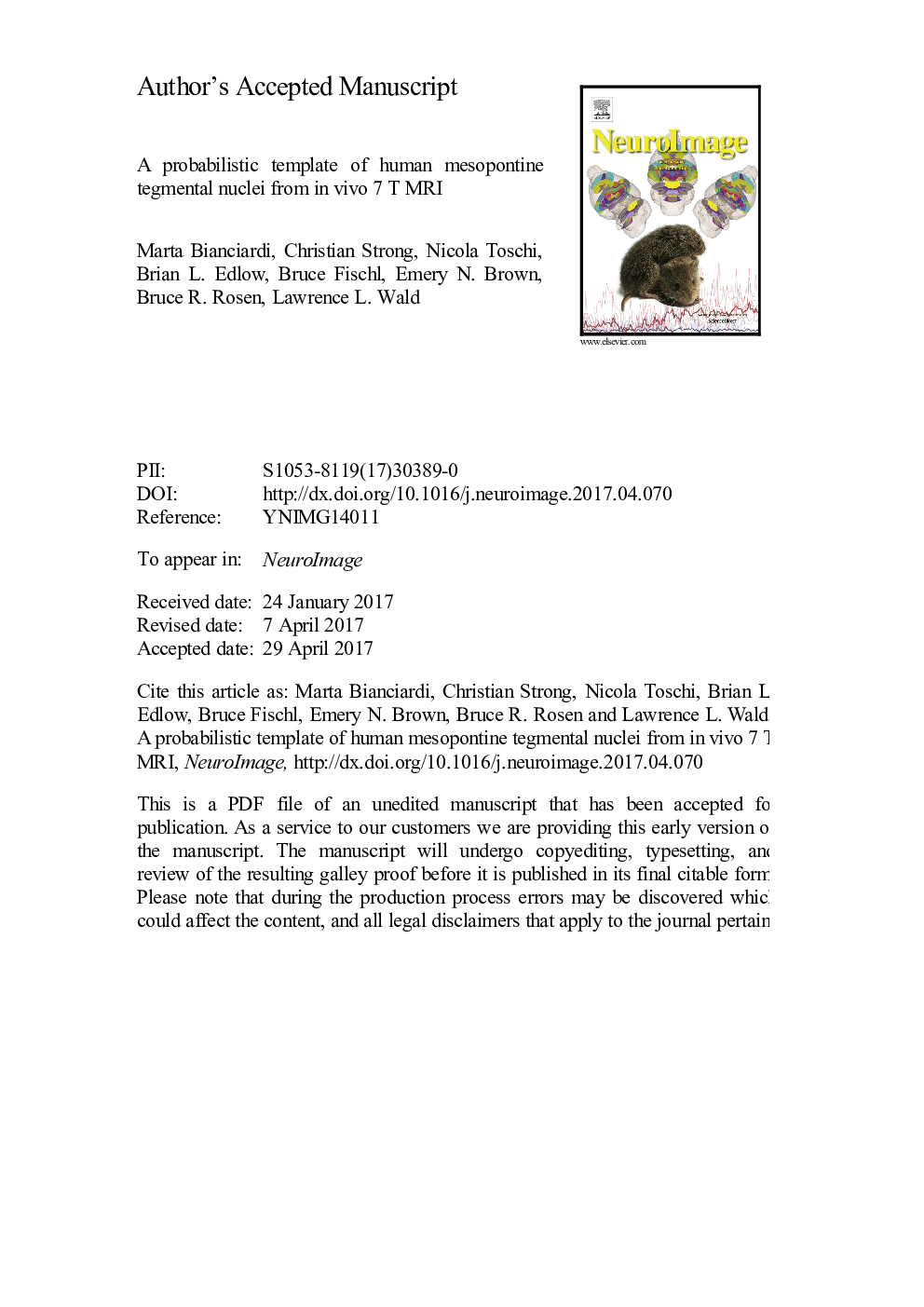| Article ID | Journal | Published Year | Pages | File Type |
|---|---|---|---|---|
| 8687136 | NeuroImage | 2018 | 30 Pages |
Abstract
Mesopontine tegmental nuclei such as the cuneiform, pedunculotegmental, oral pontine reticular, paramedian raphe and caudal linear raphe nuclei, are deep brain structures involved in arousal and motor function. Dysfunction of these nuclei is implicated in the pathogenesis of disorders of consciousness and sleep, as well as in neurodegenerative diseases. However, their localization in conventional neuroimages of living humans is difficult due to limited image sensitivity and contrast, and a stereotaxic probabilistic neuroimaging template of these nuclei in humans does not exist. We used semi-automatic segmentation of single-subject 1.1Â mm-isotropic 7Â T diffusion-fractional-anisotropy and T2-weighted images in healthy adults to generate an in vivo probabilistic neuroimaging structural template of these nuclei in standard stereotaxic (Montreal Neurological Institute, MNI) space. The template was validated through independent manual delineation, as well as leave-one-out validation and evaluation of nuclei volumes. This template can enable localization of five mesopontine tegmental nuclei in conventional images (e.g. 1.5Â T, 3Â T) in future studies of arousal and motor physiology (e.g. sleep, anesthesia, locomotion) and pathology (e.g. disorders of consciousness, sleep disorders, Parkinson's disease). The 7Â T magnetic resonance imaging procedure for single-subject delineation of these nuclei may also prove useful for future 7Â T studies of arousal and motor mechanisms.
Related Topics
Life Sciences
Neuroscience
Cognitive Neuroscience
Authors
Marta Bianciardi, Christian Strong, Nicola Toschi, Brian L. Edlow, Bruce Fischl, Emery N. Brown, Bruce R. Rosen, Lawrence L. Wald,
